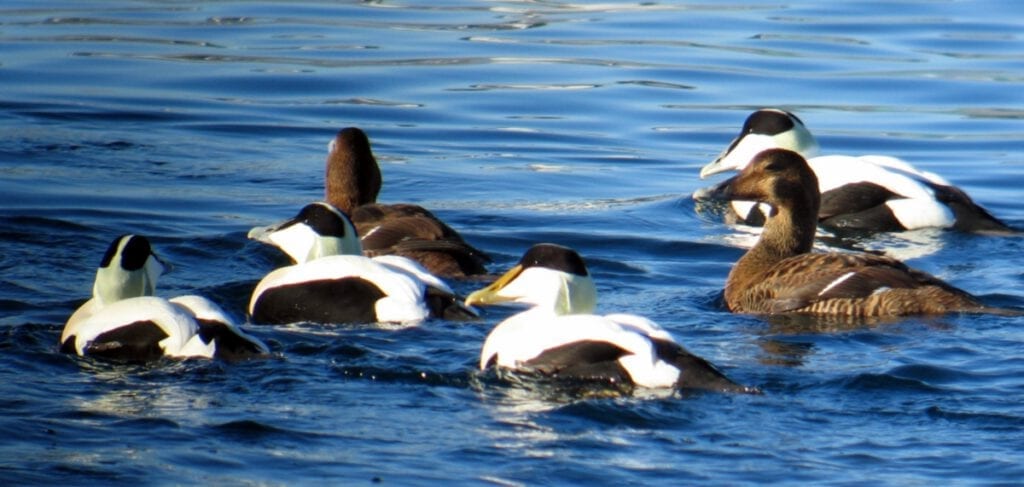Migration strategies in Common Eiders from Svalbard
Most Arctic-breeding seabirds migrate south during the winter. Knowledge of migration routes and wintering areas is integral for successful conservation of these globally important breeding populations. Coordinated international conservation measures are important, since Arctic-breeding seabirds depend on safe flyways and the safeguarding of wintering areas.
In this study, light-level geolocators were deployed on female Common Eiders breeding in Kongsfjorden, Svalbard, to track their movements during the non-breeding season. Autumn migration took place between late August and late December, and spring migration from late March to late May. The migration lasted for about four days in autumn and three days in spring. Of the female Eiders that were tracked, 77 % wintered around the Icelandic coast and 23 % off the coasts of North Norway. Birds that migrated to Norway departed later from Svalbard in autumn and consequently spent less time in the wintering area than individuals that migrated to Iceland.
Read the article:
The results from this study show that Common Eiders from Svalbard wintered on Iceland and in Norway. Data from Kongsfjorden indicate that the Common Eider breeding population in Svalbard is stable, potentially reflecting good environmental conditions in both the breeding area and the wintering areas. The tracking data highlighted both the core areas used during winter and the time periods that birds are present. Such knowledge provides a key basis for instituting some degree of legislative protection and bilateral conservation management.
Contact person: Sveinn Are Hanssen, NINA
